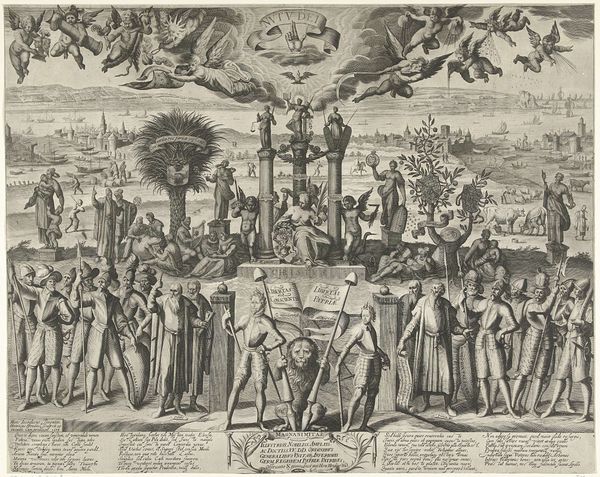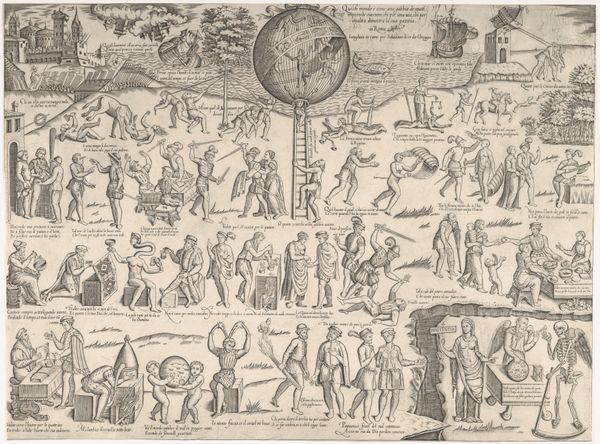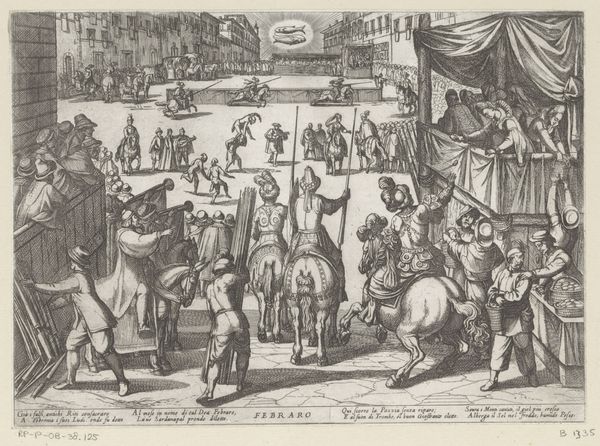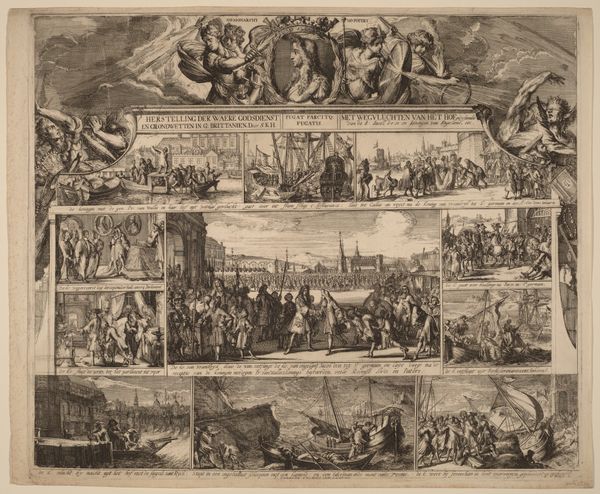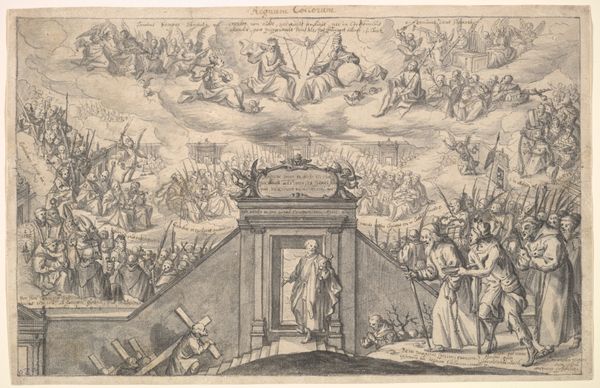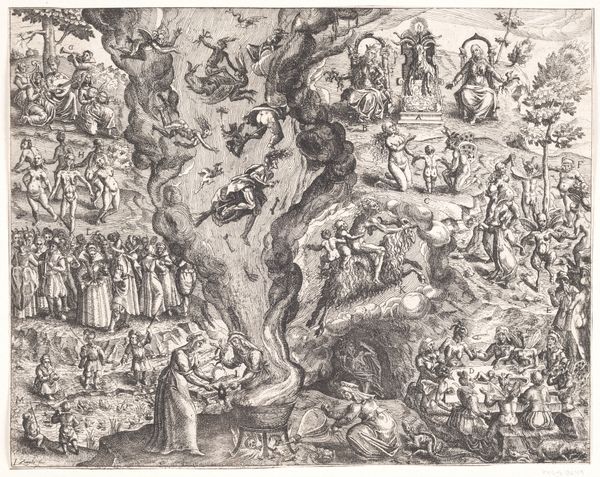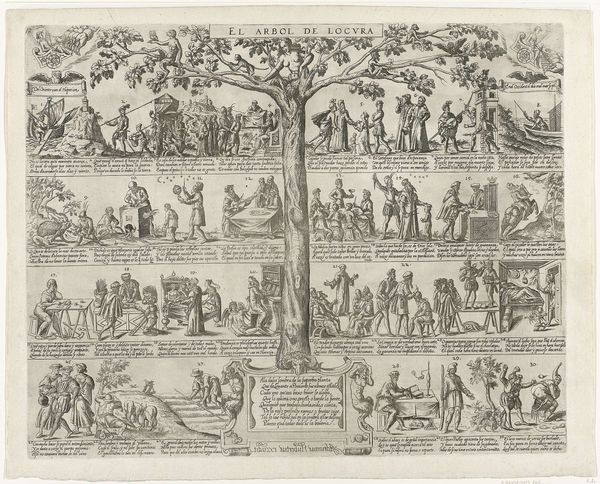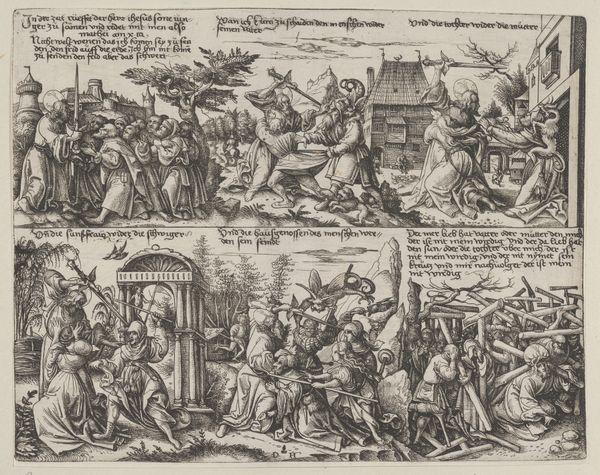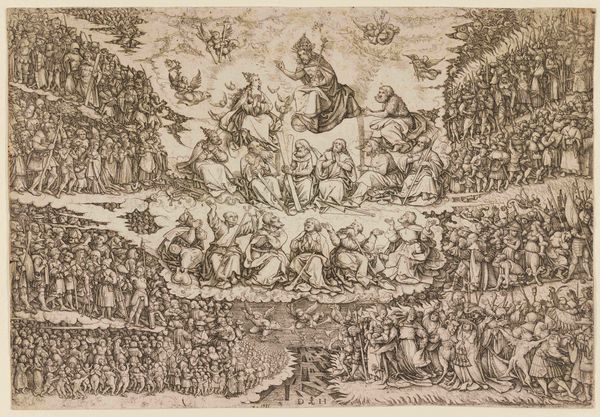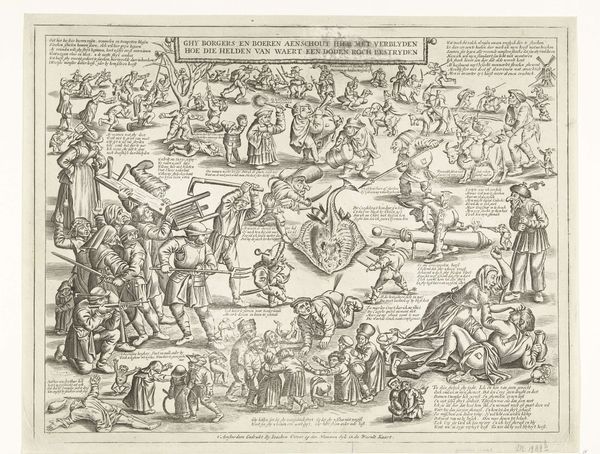
drawing, print, ink, woodcut, engraving
#
drawing
#
allegory
# print
#
ink
#
woodcut
#
history-painting
#
northern-renaissance
#
engraving
Dimensions: 232 mm (height) x 296 mm (width) (bladmaal)
Franz Hogenberg produced this engraving, "Heksesabbath," during the late 16th century, an era rife with witch hunts and religious upheaval. The image is a fascinating window into the cultural anxieties of the time. We see witches engaged in all sorts of depraved acts, from cavorting with demons to casting spells. But it's important to consider the social context in which this image was made. The witch trials were often fueled by fear and suspicion, and were used to scapegoat marginalized groups, particularly women. Institutions like the Church played a significant role in perpetuating these beliefs, and images like this one helped to solidify the stereotype of the witch as a dangerous and subversive figure. To understand this image fully, we might turn to historical documents, such as trial records and religious texts, to better grasp the social and institutional forces that shaped its creation and reception. Art is always contingent on its social and institutional context.
Comments
No comments
Be the first to comment and join the conversation on the ultimate creative platform.
